Top 12 Must-Know User Research Techniques
UI/UX Design
User Research
Where Do You Even Start with User Research?
User research has been waiting a long time for its spot in the limelight. And it seems that time is here. As more people wise up to its potential, it’s unsurprising. In fact, The 2022 State of User Research Report found that only 3% of researchers found buy-in a barrier, compared to 20% in 2019/2020. User research is without a doubt, on an upward trajectory. However, data from the same report found that 52% of those working in user research either learned on the job or are self-taught. With barriers to entry lowering and more and more product teams adopting user experience research (UXR), we felt it would be helpful to share our learnings and experiences with teams ready to empower their users. In this article, we want to cover some of the most impactful research techniques that deliver the best user insights to channel into your digital products and services.
Navigate this article:
What Are the Best UX Research Methods?
To answer this question, we’ll have to start with a phrase most researchers are well-acquainted with. It depends. Each technique has its own strengths, challenges and limitations. The trick is to get them all working together to best suit your team’s capacity. Once you’ve got an idea of what you can achieve - start looking at your roadmap and finding areas where research will provide the most value quickly. There’s no point in scheduling interviews with your users if a round of usability testing will address your current needs. However, one idea we do champion is a mix-methods approach; a complimentary pairing of qualitative and quantitative data. In this article, we’re going to break down 12 must-know research methods and share powerful techniques from both Qual & Quant.
Qualitative Methods
Qualitative research aims to answer the what and why questions in your research. It uncovers meaning in attitudes and behaviours. Qual research is flexible and open-ended in nature; it lends itself to examining social realities and helps contextualise real-life experiences. In UXR it has several goals:
Uncover problems with a product or service.
Investigate attitudes, perceptions and why users think the way they do.
Find new perspectives by collecting feedback on a problem.
Attribute meaning to certain behaviours.
Because of its style, qualitative research lends itself to understanding a user’s perspective by fleshing out what they do, think, say, and feel. Because the data is often contextually rich, qualitative research methods only require around five participants to start collecting valuable insights.
1. User Interviews
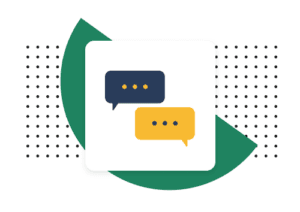
Research Type: Qualitative. Focus: Gain contextually rich insights. User interviews are a highly personal style of user research, used to extract key insights and personal opinions. Led by the researcher, user interviews are usually conducted on a one-to-one basis. According to a survey, the most popular form of user research is user/generative interviews - 46% of people surveyed said it was the form of research they do most often (The State of User Research 2021) Interviews are an effective way to understand a particular topic, behaviour or experience to collect insight from a user’s perspective. Especially from participants who are considered experts in the domain, work within the area of interest or are actual users of a product/service. You can carry out user interviews just as effectively as a remote team, as you would in person. Though you may feel like you’re losing the personal touch, remote research can significantly reduce costs and make user recruitment easier. Strengths:
You can surface unique, detailed insights from key users.
Rich qualitative data like non-verbal communication, body language and discovering the language that surrounds your product.
Challenges:
A smaller pool of possible participants.
User recruitment can be a major challenge.
Method
There are several approaches to user interviews, we focus on two styles. The first is a semi-structured format where questions/statements can be open and led with a more free-flowing style. This is common in exploratory research, for example: tell me about a time you viewed a house online. The other approach is a closed approach where the style is more direct (structured interviews). Typically, responses are more ‘yes or no’. For example: ‘have you ever viewed a house online?’
2. Usability Testing
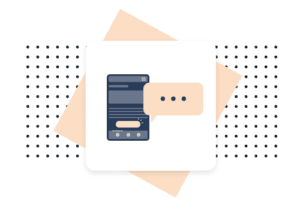
Research Type: Qualitative. Focus: Getting direct feedback from users on a product or prototype. Usability testing is exactly what it sounds like - you’re testing a working version of the product (prototype or released product) to see how users interact. It is an extremely focused and popular type of UXR. Insights from usability testing are among the most valuable a researcher can access. Usability testing is a proven user research technique and has several benefits. First, it shows you an unfiltered view of how users behave when they use a product. Be it an app, website or any other interface, researchers can get a view into how users engage with a working product. Second, the method captures a range of verbal and non-verbal behaviours such as:
Externalised thoughts and feelings.
Body language.
Friction and blockers in the user experience.
How a user flows through the interfaces.
How they achieve their goals.
General feedback.
Strengths:
Direct feedback on how key users navigate your product or service.
Expose flawed user flows.
Reveal the how behind anomalies in your analytics.
Challenges:
Require significant resources on the part of the research team and participants.
Find problems, but not always solutions.
Method
Usability tests require direct active input on behalf of the users. So, make sure the prototype or version is of a good working standard. Researchers can do usability testing either in person or remotely; the best teams will put in the time to establish the best conditions accordingly. It is important to test on core users who fit your main user profile to ensure the feedback is representative of the whole. Participants are monitored by researchers who look specifically at the user’s behaviours, reactions, and record general feedback. Be prepared to capture the data in different formats. Use video to record reactions you might miss in session and have tools to take notes.
3. Focus Groups
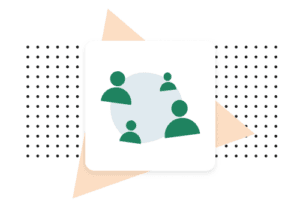
Research Type: Qualitative. Focus: Sparking contextual conversation. Focus groups are the research method of choice for generating a wealth of insight from a group of users or domain experts. Depending on the group size, 1-2 researchers may be required to facilitate and document the findings in a session. Typically used as an exploratory method, focus groups delve into behaviours and experiences related to a certain topic. Focus groups allow researchers to find opinions and consensus quickly among participants. A major advantage of focus groups is that they can drive interaction between participants, who can then bounce ideas off each other and cover details that could be missed in one-to-one interviews. Focus groups can lean into discussions in earlier stages of a project or give feedback on early prototypes in the design phase. Strengths:
Efficiently collecting a range of ideas, opinions and behaviours.
Group thinking can drive innovative data and outputs.
Challenges:
People can be uneasy discussing their own ideas in a group setting.
Confident speakers can dominate the conversation.
Requires a skilled researcher(s) to guide the session effectively.
Method
Focus groups are easy to manage with the right preparation. Group sizes may vary from 3-4 participants but could reach an upper limit of 10. Spread anything beyond 10 participants over several sessions to avoid congestion and idea overload. A session outline is created to maintain focus, but freedom should be allowed for discussion and moderated accordingly. Expert researchers (like our own Dr Jerdan) can expertly guide participants from unsuitable topics and maintain the flow of the focus group’s discussion.
4. User Shadowing

Research Type: Qualitative. Focus: Actively oversee user experiences. User shadowing is an ethnographic style of research, similar to ethnography in objective but different in approach. Also known as user observation, it requires the researcher to take an active ‘over the shoulder’ role, watching the participants complete key tasks. The benefit of user shadowing is the researcher's ability to intervene. Although it is not always necessary, a researcher can ask questions, take notes and get in the driver's seat with the participant. Experienced researchers will know when to make their presence known or remain in the shadows - actively listening and looking for key clues and behavioural signals. Strengths:
Collect real-time, contextually rich data.
Active participation with users.
Challenges:
Awareness of a researcher's presence can cause the participant to behave differently (See: Social desirability effect).
Method
User shadowing is such an accessible research method. With the right planning, you can round up 5+ participants to shadow individually. The main requirement is a keen eye for detail, so having a strategy in place to record as much user behaviour as possible is key. This can include video equipment, a dictaphone and a good old-fashioned notebook to capture any spur-of-the-moment ideas. Crucially, the participant needs to feel comfortable being observed to combat any bias in the behaviour. Researchers should be approachable and understanding of individual participants' circumstances.
5. Diary Study
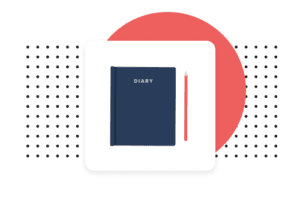
Research Type: Qualitative. Focus: Understanding long-term behaviour and habits. Diary studies are a great way to consistently engage with a user's journey. It involves the research participant recording and collecting observations over time. The goal is to understand long-term behaviour and revel habits. The method is called a diary study because it collects longitudinal data over days/weeks and can be self-reflective (‘how does this make me feel?’), much like keeping a diary. Why would you conduct a diary study? There are a few reasons why. For example, if a client asked us to spend some time understanding how their business operates, especially in complex industries like law. They can also be used to understand a user's journey and take in daily tasks a user might have to complete. Strengths:
Develop an in-depth knowledge base of user behaviour.
Spot interesting and unique habits and caveats related to product use.
Challenges:
You must rely on the participant to remain consistently focused during the study.
Requires thinking ahead for recruitment. Users will likely need to be strong advocates for the brand or well-compensated.
Method
Like most research methods, the key is in planning. To get the most out of diary studies, having a solid briefing for the participants is essential. A clear brief will clarify what the participant need to track and how they should log their thoughts. Usually, this involves an upfront conversation with the researcher where they outline how the participant needs to engage with the study and set expectations. All of this will guide the participant and give them a sense of accountability for the study.
6. Ethnography
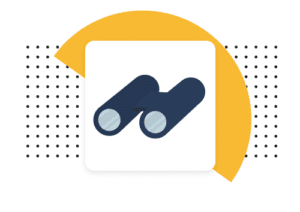
Research Type: Qualitative. Focus: Observe with minimal interaction. Ethnography may sound complicated, however, it simply stands for the observation of people in real-life situations. Researchers can actively participate in ethnography, however, the best results come when they watch from a distance. Effective ethnography usually requires the researcher's presence to be minimum or unknown. People can change their behaviours when they know they’re being observed. Like other qualitative research methods, ethnography seeks to better understand behaviour. By watching from ‘the field’ you not only see what users do but how they do it. There’s a big gap between what participants say and do. Ethnography is useful for identifying non-verbal communication like body language. Strengths:
Aligning actions with what participants say.
Require very few resources to complete.
Challenges:
Results can vary given the limited interaction between researchers and participants.
Method
Given the right conditions, ethnography is simple to undertake. The main requirement is a keen eye for detail, so having a strategy in place to record as much user behaviour as possible is key. This can include video equipment, a dictaphone and a good old-fashioned notebook to capture any spur-of-the-moment ideas.
7. Card Sorting
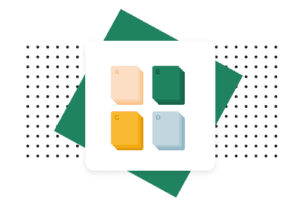
Research Type: Qualitative. Focus: Discover what makes sense to the user. Card sorting is a great research activity for determining how a user understands the information presented to them around a certain topic or area of interest. It requires presenting the participant(s) with a group of labelled cards and sorting them into categories that make the most sense to them. The activity can be used to inform decision-making on Information Architecture (IA) or to simply understand how groups of users interpret different topics. For example, we may want to understand more about how users view apps that allow them to monitor fitness levels, rather than predetermining categories such as ‘goals’, ‘wellbeing’ or ‘health benefits’ we ask users to organise the labels themselves. The main benefit here is it avoids reliance on internal thinking or what you think you already know. Another example that demonstrates this is an old study from The Nielsen Norman Group. They tested two navigation schemes for an e-commerce site. They saw an 80% success rate when using the scheme structured according to user research about customers’ mental models. When they built it with internal thinking, the results dropped to just a 9% success rate. Strengths:
Understand how key users interpret information and identify new ways of organising IA.
Challenges:
Results can vary and it won’t provide a definitive answer.
Method
To get the most out of card sorting, researchers must create 40-80 labelled cards for a session. The activity is best when done on a one-to-one basis, but under time/resource restraint, small groups can work. The researcher should not participate in the initial card sort, however, they may gain more qualitative data by conducting a debrief, where the researcher and participants discuss why they have ordered their card to provide context to their rationale. Repeat on 15-20 users.

Quantitative Research
Quantitative research answers the how many questions in user research. Quant research’s strengths lie in accurate numerical data and require a more structured approach. The beauty of quantitative data rests in its ability to be easily replicable. A well-designed quantitative study will often be representative of the whole; it is well suited to making comparisons and identifying patterns. The goals of quantitative research are:
To discover the scale of a specific problem.
To compare alternative solutions and prototypes.
For Benchmarking UX goals e.g. It can demonstrate if a product or service is getting the right results.
To be successful, quantitative research requires a large sample of respondents to paint a clear picture. Each method requires different levels of participation, so be sure to research before you dive in. One major benefit of quantitative results is reliability. Essentially if you ran a quantitative study on two samples of the same demographic, it is likely similar results would emerge, provided equal controls were in place. A result like this gives researchers confidence in the reliability of their research.
8. Questionnaires

Research Type: Quantitative. Focus: Quickly gather a lot of data on specific questions. A powerful tool in a researcher's arsenal, questionnaires can be sent to a wide pool of users to collect information on a diverse range of topics. There are two approaches researchers can take. First, they can be a series of open questions where respondents are free to answer as they choose with as little or as much detail. The second is a closed-question approach where the answers have been pre-determined by the researcher. N.B - Not to be confused with surveys, questionnaires are used to collect both quantitative and qualitative data from a pre-determined set of questions. A survey is data collection to conduct statistical analysis of a wider set of methods. For example, questionnaires may be used in a survey, but not the other way around. Strengths:
Cheap to create and distribute.
Questionnaires can collect both quantitative and qualitative data quickly.
Challenges:
Needs a large number of respondents for validity.
Users are typically less invested in your research and may require incentives.
Method
Questionnaires can be distributed both electronically and physically depending on the needs of the participants. The right design is crucial to its success and therefore requires empathy for the needs of the participants. Are participants short on time? Do they need incentives? Are they willing to answer short or long-form questions? A researcher must take all of this into account for the questionnaire to be successful. Research suggests that 75% of surveys fail to meet the minimum response rate. Poor response rates to questionnaires come down to several factors, so our in-house researcher Dr Jerdan oversees surveys that are designed to best practice for maximum effectiveness.
9. A/B Testing
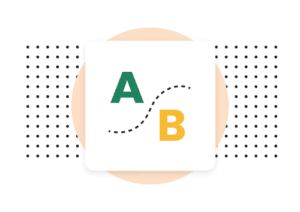
Research Type: Quantitative. Focus: Finding the best option. A/B testing is a highly effective user research method that enables a researcher to quantify user preference. Researchers can use A/B tests at multiple stages in a product development process - from early concept testing to highlighting prototypes to take forward into advanced design phases. This research technique removes bias from the decision-making process on behalf of both the researcher and the participant. A/B testing can be an excellent tool to confirm insights drawn out of research and built into products. Alternatively, A/B testing quickly eliminates incorrect assumptions in the early stages of prototyping. Strengths:
Quantify user preferences.
Challenges you to create better solutions.
Challenges:
Limited to certain research objectives.
A/B testing doesn’t fix a poor design solution.
Method
Two choices (Whether a high-fidelity prototype or an initial basic concept) are presented to participants. Each is either presented with one of the two options, or both options side by side, depending on the requirements of the researcher. As much as possible must be done to avoid bias, i.e randomisation, neutral presentation locations, minimal input from the researcher, and limited contact with other participants.
10. Click Testing
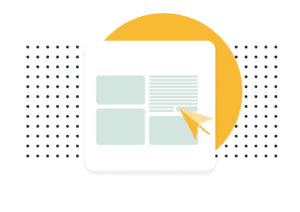
Research Type: Quantitative. Focus: Validating design assumptions. During the early stages of design, how do you know your ideas are going to work? Click testing is a research method that focuses on testing design solutions with users before any major work goes into building out the idea. Using a wireframe or early prototype, a click test presents specific parts to users. The biggest benefit of click testing is removing any frustrating setbacks further along the process where designs are sub-optimal and require more resources to change. Think of it like early-stage A/B testing. It helps us understand user behaviour and test your designs by the user's logic. Strengths:
Pinpoint user preferences early on in design.
Challenges:
Only shows preference and will not fix a poor design.
Method
To deliver a click testing session, you typically show one page or image at a time. You ask the participant questions about the product to navigate to the desired location. For example:
How would you navigate to the product page?
Where would you go to log out?
Where would you go from here?
Results can identify critical weaknesses such as unclear CTAs, poor iconography and confusing information architecture. Research from MeasuringU found that a participant who clicks down the right path on the first click will complete their task successfully 87% of the time versus a participant who clicks down the wrong where there is only a 46% success rate. Click testing is a powerful research technique to try.
11. Analytics
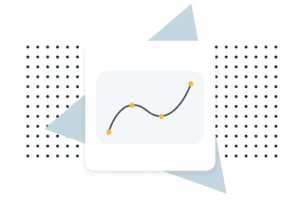
Research Type: Quantitative. Focus: Monitor current usage. Researchers can discover a lot about user behaviour without even interacting with them. Analytics requires diving into current data you’ve already collected to monitor products and behaviour. Pending data collection is already set up, researchers can use analytics to flesh out their understanding of a research project before the beginning. It can highlight weaknesses and anomalies and guide researchers to set clear objectives. Alternatively, they can be used to set benchmarks for future measurement to weigh up the success of user research. Combining qualitative data sets with analytics to triangulate results and provide validity. Strengths:
Analytics are usually readily available.
A great tool to identify hypotheses and areas for further research.
Challenges:
Examining data is impersonal and does not actively address users' needs.
Data trends can be misleading and lead to internal biases.
Method
Analytics as a research method can be from a single reference point or a range of different sources. The method is very much dictated by the resources available. However, the more a researcher has, the better the picture they will be able to build. No matter the data source, a good researcher will be able to put it to use.
12. System Usability Scale
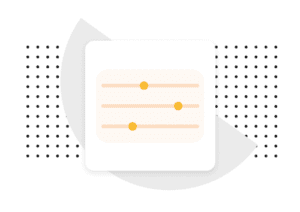
Research Type: Quantitative. Focus: Quantify a product’s usability. A system usability scale (SUS) is a research method used to measure the overall effectiveness of a product. The test consists of 10 set questions that address the general usability of a product. Using a Likert scale (from strongly agree to strongly disagree), a researcher can get a good overview of how users perceive the product in its current form. Because Likert scales are easy to engage with, you can bring in a lot of quantitative data that indicates current opinions on a product. This can be used as a benchmarking technique to measure improvement and highlight priority areas that may need more work than others. Strengths:
Direct participants' attention to the wider experience.
Easy to distribute.
Standardised approach.
Challenges:
Requires a large number of respondents.
Social desirability can impact the sincerity of the response.
Method
The SUS give the ability to be direct and ask about specific areas without leading the participant. It is a simple and standardised format that ascertains how much a user agrees with a statement, but the Likert scale also can extract ideas about likelihood, frequency and importance to the user. SUS are a relatively low resource to conduct and can be distributed both digitally and physically.
Chose Your User Research Techniques Wisely
There you have it. 12 solid user research techniques that can boost the outcomes of your user research. One final piece of advice from us. Choose your methods wisely. With these techniques, it’s all about quality, not quantity. Don’t overload yourself with too many methods that become unmanageable. Remember, you still have to do all your analysis. Pick your battles. Choose qualitative techniques that give you a robust perspective and statistically back your findings with quantitative methods. If you have any questions about research or want to hear more from our user experience and research team, you can reach out to us. We can help you build a research approach that has strong roots in strategy and are well aligned with what your product needs.

Got an idea? Let us know.
Discover how Komodo Digital can turn your concept into reality. Contact us today to explore the possibilities and unleash the potential of your idea.

Sign up to our newsletter
Be the first to hear about our events, industry insights and what’s going on at Komodo. We promise we’ll respect your inbox and only send you stuff we’d actually read ourselves.






